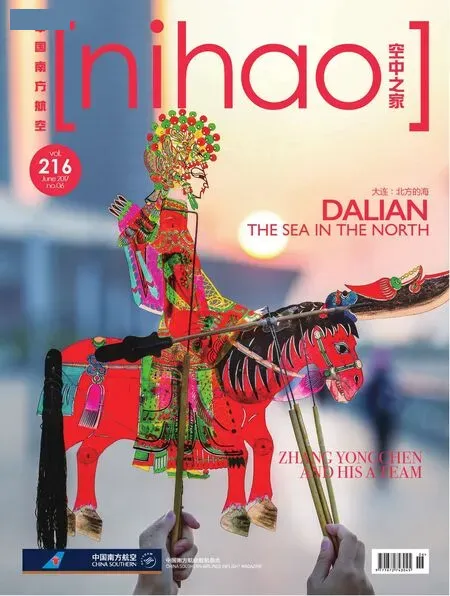Run! Dragon Boat! Run!
Run! Dragon Boat! Run!
What prompts people to yell and cheer enthusiastically at the riverside during the hot days of Duanwu Festival in Guangdong? There is only one answer: a dragon boat race.
Text by Peter Translation by Sonia Photo by Gaopin Illustration by Nan Fang
When it comes to the origin of dragon boat, people instinctively think of Qu Yuan (340-278 BC). As a matter of fact, dragon boat as a culture appeared much earlier than the time of the poet. Research has it that the prerequisite of holding a dragon boat race is an area where rice is produced and has river ports. Guangdong, located at the south of the Five Ridges, is exactly the place.
There are two types of dragon boats. The “Cruising Dragon” is large and vividly decorated, and is about parading clothes at the aide of fl ags and drumbeats. The “Racing Dragon” is small and all about speed. Each of the neighboring villages has its own dragon boat holiday. The villages would set their festivals on different days to avoid event schedule clashes. Some will hold “taking goals” (racing), while others enjoy “watching view”(cruising).
The most anticipated of all is “taking goals.” On the course, thousands of meters long, the dragons on the river shoot forward like arrows, splashing water everywhere and competing with one another for the goal. A dragon boat race is a group sport that takes collaboration and teamwork to win. The person at the bow is the commander and has to be quickwitted, resourceful, and adaptive to changes. The gong and drum players have to send out powerful and clear beats. The most crucial is the front rowers, who are the strongest on the boat and direct the rowing at their rhythm. The steersman at the stern of the boat cannot make light of their job either since they control the direction of the dragon boat. Any remiss of their part will lead to blunders.
Besides the races, the day of new dragon boat launching is quite a scene. At dawn, the young adult men in the villages row the dragon boats to the temple to pray for prosperity and household safety, lighting fi recrackers and beating gongs and drums along the way. In the gathering place in the village, a 9-bowl banquet is prepared by volunteering villagers. Moreover, there are pig roasts on this day and whoever makes a donation to the event will get a share of the pork.
Villagers would send invitations to their clan, friends and family in neighboring villages. Guests who accept the invitations will cruise on the river towards the banquet on dragon boats loaded with gifts. When new dragon boats pass some village where rowers' friends and family live, the friends and family would put the gifts marked with rowers' names into the boat. The boat accepting the gifts would proudly light fi recrackers in response.
There was once the tradition that women weren't allowed on the dragon boat. The stricter practices even forbade women to walk on the bridges that the boats rowed underneath. It is very different nowadays as rowing a dragon boat has become a group sport and women dragon boat teams are often a pleasing view that cannot be missed on the rivers.

